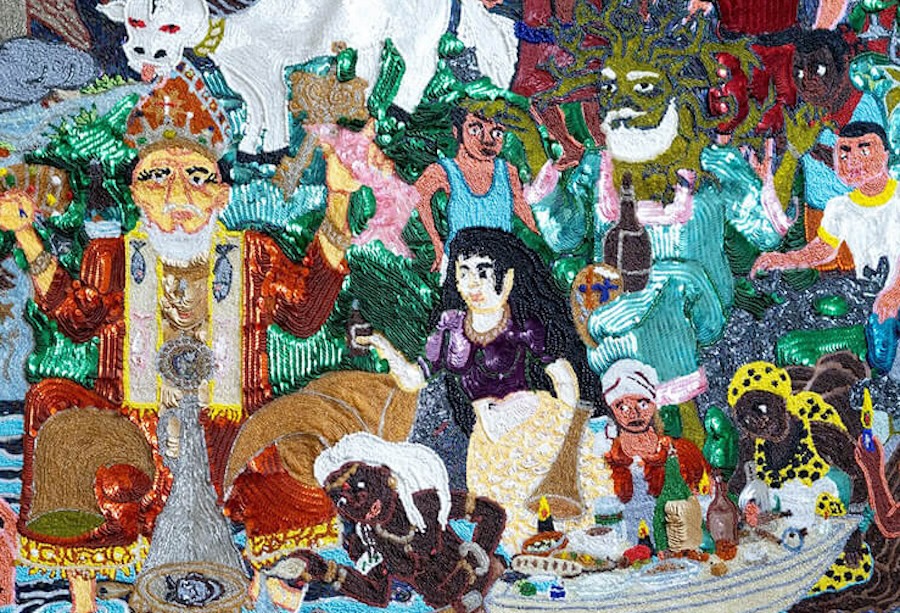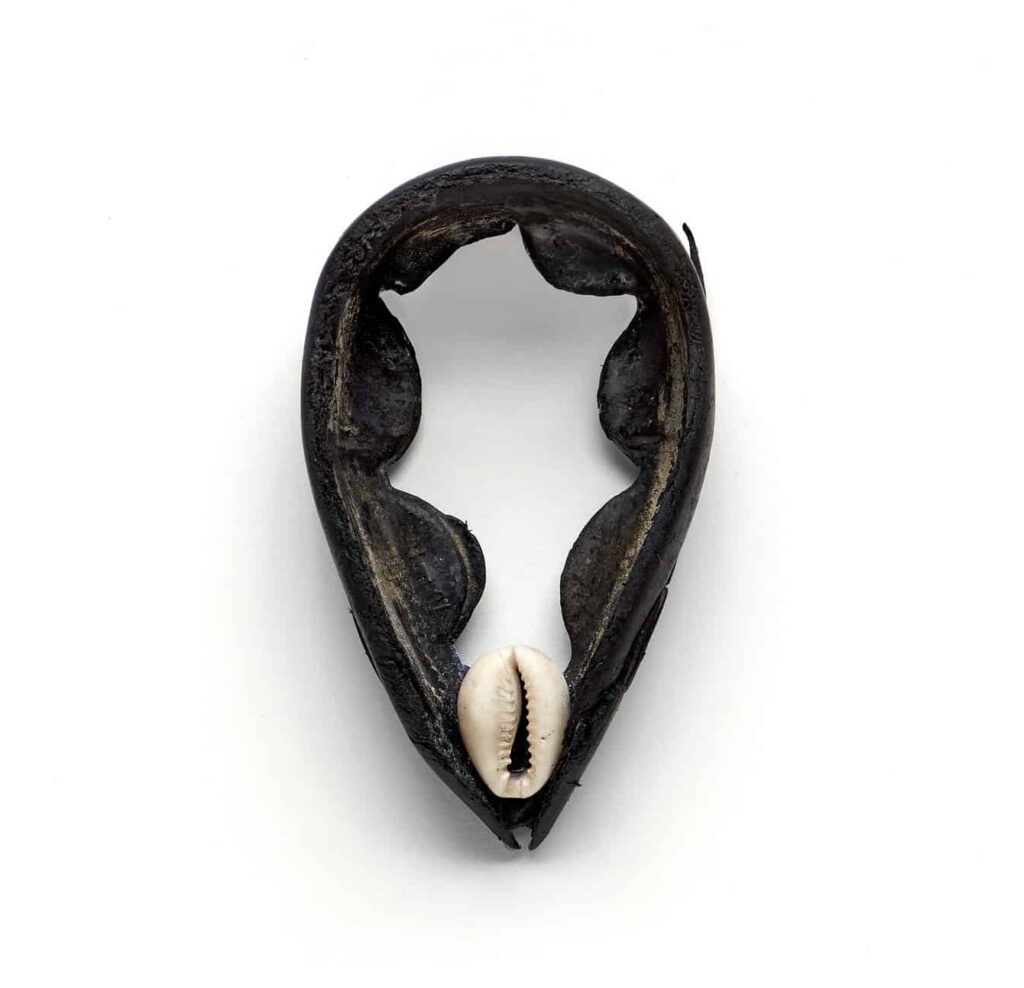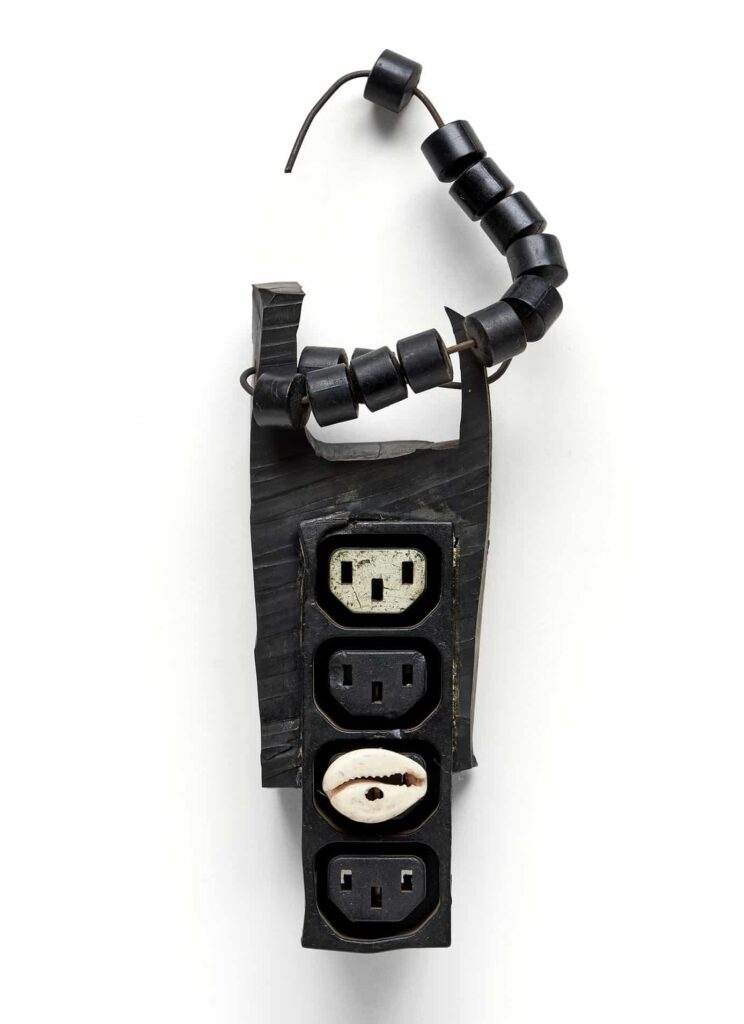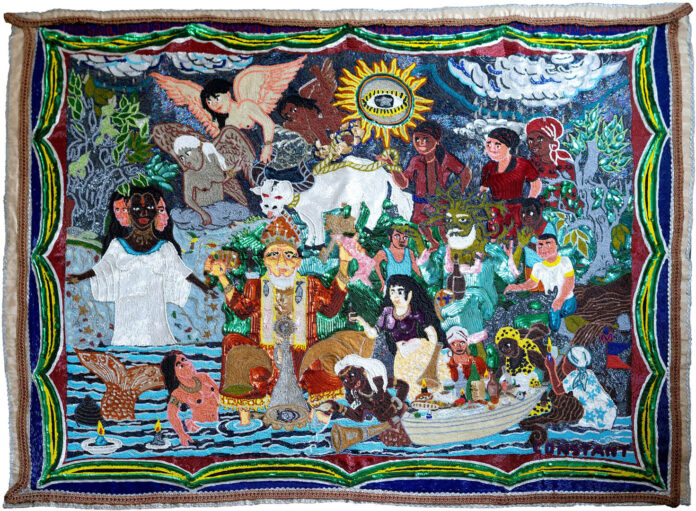In January 2023 Key Jo Lee began her position as Museum of African Diaspora’s (MoAD) inaugural Chief of Curatorial Affairs and Public Programming. As Lee’s first curated group exhibition, “Unruly Navigations” (though September 1) offers an exciting glimpse into her vision for the institution’s curatorial mission.
Through her exhibition title, Lee suggests the defiant and resourceful spirit of the African diaspora as it has spread throughout the world and created a web of hybrid histories and cultures. Most profoundly, with “Unruly Navigations” featuring many artists with multi-national and hybridized cultural backgrounds—spanning Africa, North America, Europe, and the Caribbean—Lee moves the curatorial frame and the institution’s mission beyond our American perspective to take a much more global approach to exploring and representing Black culture.
The exhibition’s 22 works including a mix of paintings, textiles, sculptures, installations, a participatory work, and a video; “Unruly Navigations” offers a compelling variety of mediums, aesthetics, concepts, and narratives, many of which draw upon vernacular histories, customs, crafts, and symbolism.

In particular, the exhibitions starts off strongly with Haitian artist Myrlande Constant’s large scale, intricate textile work “The Spiritual World of Haiti” (2003). Brimming with mesmerizing patterns of highly saturated color and dazzling sequins and beads, Constant draws upon Haitian Vodou flags, drapo. In the work, the artist depicts rituals with candles, libations, and feasts along with spiritual figures like, a Rastafarian, a three-faced allegorical figure, a mermaid, winged angels, and a crowned priest draped in a fish-embellished stole.
While Constant alludes to Haiti’s spiritual and religious hybridity (a mix of Christian, Vodou, and African), the artist also represents the daily life of farmworkers picking crops and tending to a cow. Set within a verdant landscape and turquoise seascape, Constant’s densely clustered figures overlap in a nonlinear format, suggesting a simultaneity and magic realism. Within Constant’s work, daily life is imbued with an awareness of place and the spiritual.

On the ground floor, also drawing upon the mystical, but with a much more subdued color palette, the British born and Nigerian-Canadian artist Olueseye presents an installation highlighting of selections from his series “Eminado” (2018—ongoing). Mounted on the black painted walls of a tight corridor, the artist displays small fragmented black objects constructed from cowrie shells, hair, beads, industrial rubber, and mechanical components. The small and fragmented objects feel like artifacts of a mysterious culture that evokes the labor and bondage of modern industry with the natural beauty and delicateness of organic materials.
Pulling from African culture and history, Oluseye’s title evokes the Yoruba word for luck charm, eminado, while his cowrie shells refer to the historic West African use of shells as currency. As Oluseye’s objects converge monetary exchange with hopes or dream, the talisman also speaks to his own journeys across the Atlantic and the trans-Atlantic slave trade, where perseverance and hardships are part of a personal and collective history.

Despite formal and symbolic differences, Constant’s and Oluseye’s works converge on mystical or spiritual narratives, real and imagined, within the African diaspora. As the artists draw upon their lives and cultures in Haiti and Canada, the “New World,” they point to the larger historical migration of African people, where belief systems and ideas of transformation have historically and continue to sustain and develop individual and larger cultural experiences and communities. Most significantly, in framing the exhibition in terms of a Black diaspora, Lee has taken a globalist approach and introduced many expansive and exciting dialogues for MoAD.
UNRULY NAVIGATIONS through September 1 at the Museum of the African Diaspora, SF. More info here.





